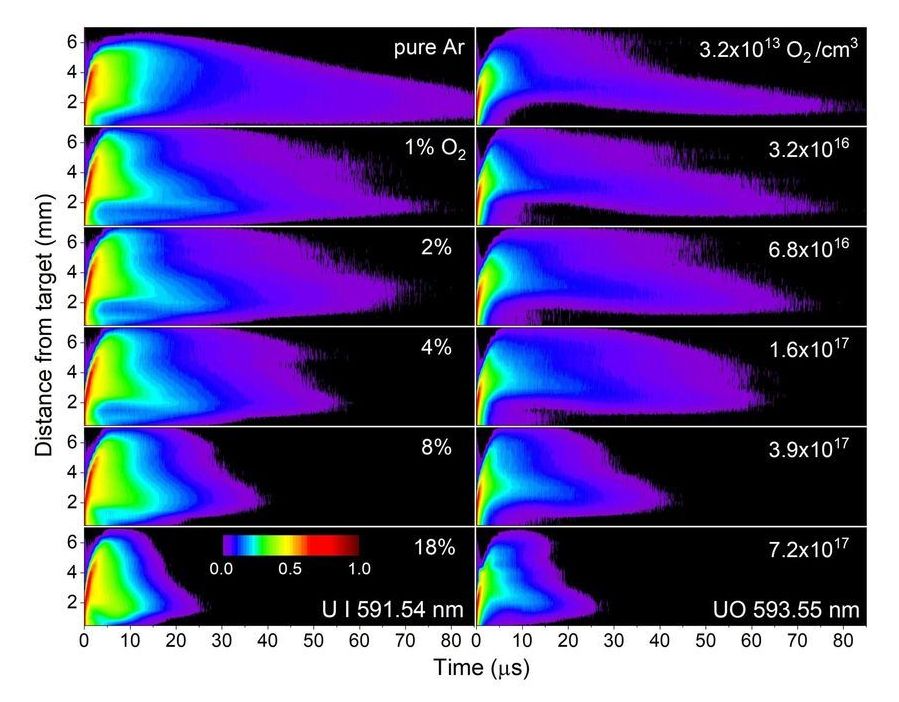When energy is added to uranium under pressure, it creates a shock wave, and even a tiny sample will be vaporized like a small explosion. By using smaller, controlled explosions, physicists can test on a microscale in a safe laboratory environment what could previously be tested only in larger, more dangerous experiments with bombs.
“In our case, it’s the laser depositing energy into a target, but you get the same formation and time-dependent evolution of uranium plasma,” author Patrick Skrodzki said. “With these small-scale explosions in the lab, we can understand similar physics.”
In a recent experiment, scientists working with Skrodzki used a laser to ablate atomic uranium, stealing its electrons until it ionized and turned to plasma, all while recording chemical reactions as the plasma cooled, oxidized and formed species of more complex uranium. Their work puts uranium species and the reaction pathways between them onto a map of space and time to discover how many nanoseconds they take to form and at which part of the plasma’s evolution.
